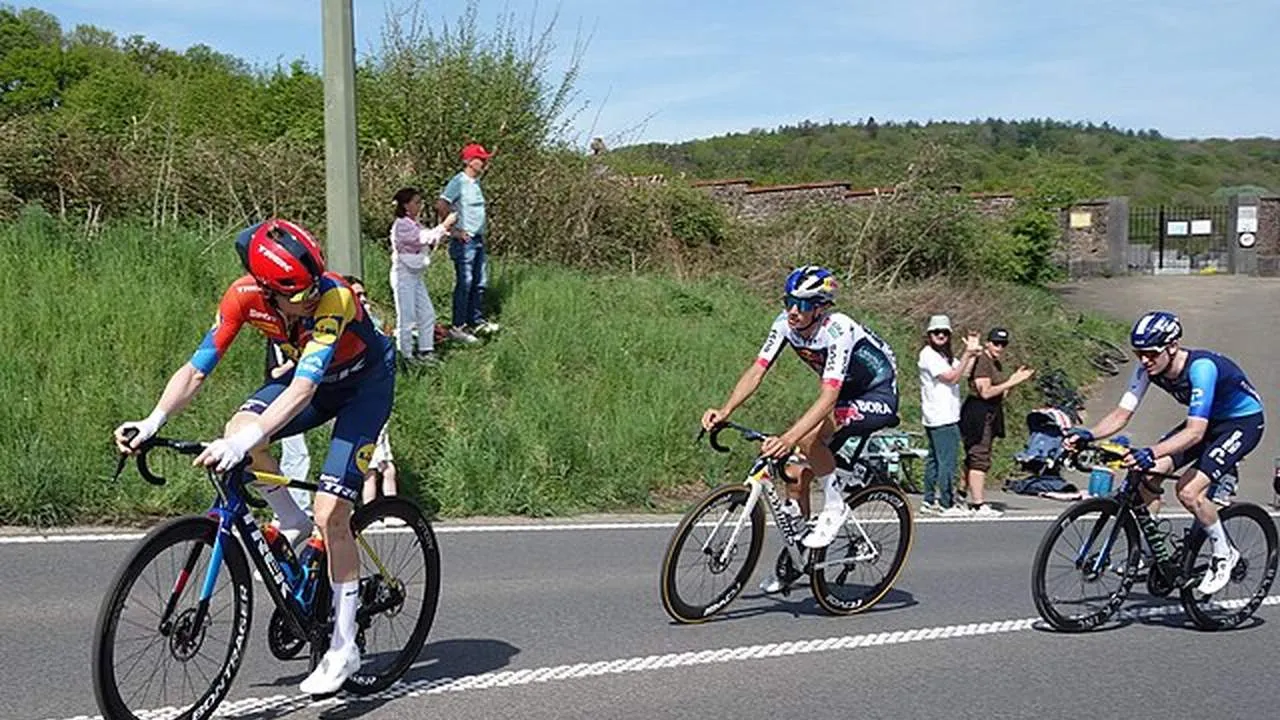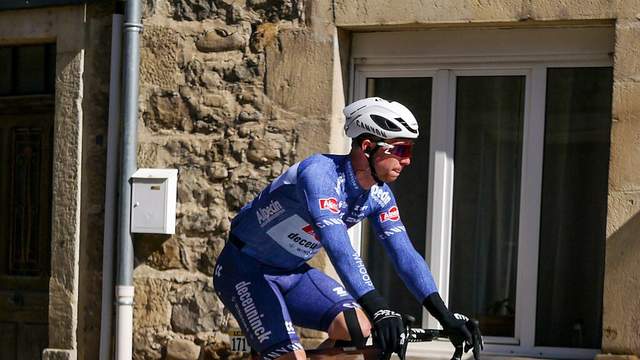Skjelmose Stuns the Heavyweights: Amstel Gold Race 2025’s Unforgettable Three‑Up Finale

Skjelmose Shocks All at Amstel Gold Race 2025
On 20 April 2025, the 59th Amstel Gold Race unfolded under mild, dry conditions across the Limburg hills of the Netherlands. In a race billed for super‑punchers, Dane Mattias Skjelmose produced the most electrifying performance of his career—storming past world champion Tadej Pogačar and Olympic champion Remco Evenepoel in a three‑man sprint atop the iconic Cauberg, claiming a victory by mere inches.:contentReference[oaicite:1]{index=1}
Predicted Front‑Runner vs Ardennes Specialists
Pogačar arrived at the race as the overwhelming favorite, riding off a dominant Tour of Flanders win and known for his explosive punch on steep climbs. Others tipped Evenepoel—an Ardennes expert—and reigning champion Tom Pidcock as contenders. Yet few expected Skjelmose—a relative newcomer in the classics—to punch above his weight.:contentReference[oaicite:2]{index=2}
Early Breakaway and Build of Tension
An eight-man escape formed roughly 40 km into the 255.9 km race, including riders like Rémi Cavagna and Michel Hessmann. They built a maximum advantage of about 4 minutes but were steadily reeled in as the race passed Gulperberg and Vanderberg. By around 70 km remaining, the break had been extinguished, setting the stage for the big moves.:contentReference[oaicite:3]{index=3}
Pogačar Goes it Alone with 48 km to Go
With ideal timing and tactical audacity, Pogačar latched onto a move by Julian Alaphilippe on Gulperberg before dropping him on the next climb. He surged clear into a solo bid, extending his lead to around 25–30 seconds over the uneven Limburg terrain. His rainbow jersey made him an obvious target—but none of the favourites could respond immediately.:contentReference[oaicite:4]{index=4}
Chase Alliance Forms: Skjelmose & Evenepoel Unite
Seeing the threat, Remco Evenepoel and Skjelmose teamed up in the chasing group. Their collaboration proved decisive: methodically cutting into Pogačar’s advantage, they bridged the gap with around 8 km to go—just before the final climb of the Cauberg.:contentReference[oaicite:5]{index=5}
Three‑Up Sprint On the Cauberg Finale
In the selective final Cauberg ascent, tactics ruled. Evenepoel led out the sprint aggressively, Pogačar surged past him mid-turn—but it was Skjelmose who perfectly timed his move. With shrewd judgement and visible composure, the Dane powered past both for the win by the width of a wheel. The margins couldn’t have been finer.:contentReference[oaicite:6]{index=6}
Pogačar Shows Strength and Emotional Acknowledgement
Pogačar’s second place, just fractions behind the first, was both a testimony to his strength and a moment of introspection. He later admitted that his opening solo effort may have been premature, praising Evenepoel’s chase and calling for future redemption in the Ardennes.:contentReference[oaicite:7]{index=7}
Evenepoel’s High-Speed Work and the Mounting Rivalry
Evenepoel, recently recovered from injury, delivered a controlled chase that was tactically astute—leading the sprint from close quarters. Despite being pipped at the line, his return to form and budding rivalry with Pogačar and Skjelmose cast a long shadow over the heart of the spring campaign.:contentReference[oaicite:8]{index=8}
What Skjelmose’s Victory Means
At just 24, Skjelmose’s explosive win marked a defining career moment. It was seen as the season’s biggest upset—a classic underdog story. The emotional magnitude was further heightened by his dedication of the win to his late grandfather.:contentReference[oaicite:9]{index=9}
Looking Ahead in the Ardennes Week
As the season forged ahead into La Flèche Wallonne and Liège‑Bastogne‑Liège, all eyes turned to Pogačar, Evenepoel and Skjelmose. Each rider now carried momentum and psychological weight—a rematch on steeper Ardennes terrain promised deeper drama in the coming races.:contentReference[oaicite:10]{index=10}
Conclusion: A Dramatic Opening to the Ardennes Classics
The 2025 Amstel Gold Race exemplified unpredictability, power and tactical finesse. Pogačar’s bold solo gamble, Evenepoel’s methodical pursuit, and Skjelmose’s surprise sprint victory combined into one of the season’s most compelling one-day races. For cycling fans, it was a powerful reminder that in this sport, no outcome is guaranteed—especially in the Ardennes.:contentReference[oaicite:11]{index=11}




